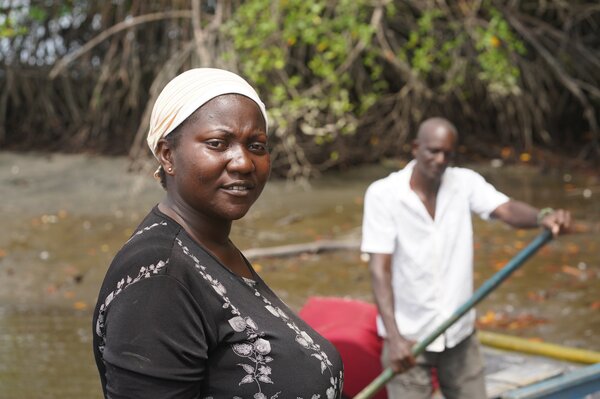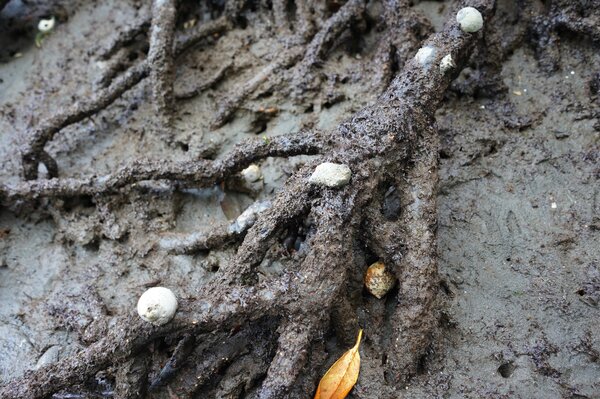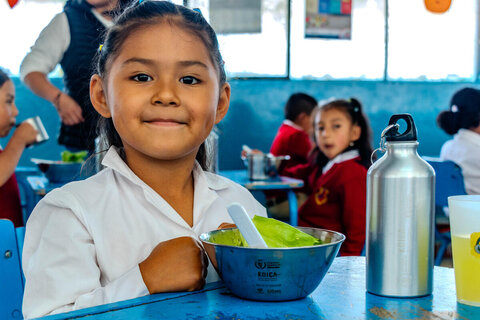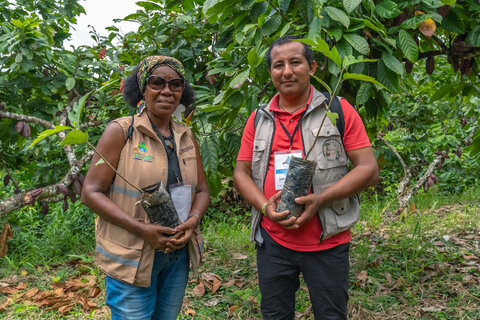Ecuadoreans and Colombians face a climate challenge
The fishing boat bobs up and down, edging away from the shore towards the lush green and tentacled corridor of the tallest mangrove trees in the world, lying in the waterfronts between Ecuador and Colombia.
"I had a very beautiful childhood here," says 24-year-old Elvia Valencia, the conchera, or fisherwoman, sat at the top of boat. "We were always curious to go to the mangroves with my mum — she was so concerned with the movement of the shells."


Elvia lives with her two children and her mother, on the Ecuadorean island of Palma Real, whose economy is pegged to fishing. For more than four generations, Elvia's family have survived on collecting and selling small shellfish from the mangrove areas.
"I always reflect on that happiness," she says. "My mum would tell us that by getting these shells ‘I can buy you something to eat and send you to school.' Seeing her happy face when she came home also filled me with happiness. We never went without."
Elvia removes a grey, sandy shell from her pocket and turns it over in her fingers. "I remember in those days the shells were big," she says. "Not anymore, they're much smaller."

For two weeks in October 2018, a particularly harsh dry spell hit Elvia and her family hard. The water level had dropped significantly around the mangroves and the shellfish weren't reproducing at a high enough rate. Elvia would go to the mangroves and come back empty-handed.
‘If the shells disappear — how are we going to feed ourselves?'
"We didn't have enough money to feed ourselves," she says. "A refuge gave me something for bread and milk but eventually many people were in the same position and they ran out. I had to go and look for work on the mainland and send back what money I could. It was a stressful time for us all."
Elvia adds the pure air and fresh fish she and her community live on in Palma Real are under threat. "We're seeing a change in the climate which is getting stronger and stronger," she says. "We're worried by what is happening around us, because our main resource is the shells. And if the shells disappear — how are we going to feed ourselves?"
With deforestation and pollution, the mangrove ecosystem which the Afro and Awá communities rely on is in danger. The Colombia-Ecuador border is one of the most climate-sensitive and food-insecure regions in Latin America, according to the Adaptation Fund, which is funding a new WFP project on both sides.

The dual-country climate project works with the affected Afro and Awá communities to come up with innovative and local solutions to the social and environmental damage they're facing. Over the next five years, WFP and partners will introduce and track a range of community awareness and climate adaption activities, like cocoa cultivation, to help people to improve and manage their nutrition and food security.
Elvia feels women and girls are bearing the brunt of these changes to their ecosystem in Palma Real.
"Women are more affected because we are the ones that take responsibility for our children and homes. Men sometimes leave, and we are the ones who suffer the most by what's happening," she says.
WFP's project puts women in the driving seat of the decision-making and prioritizes youth and elders — ensuring that no one in the Afro and Awá communities is left behind.


